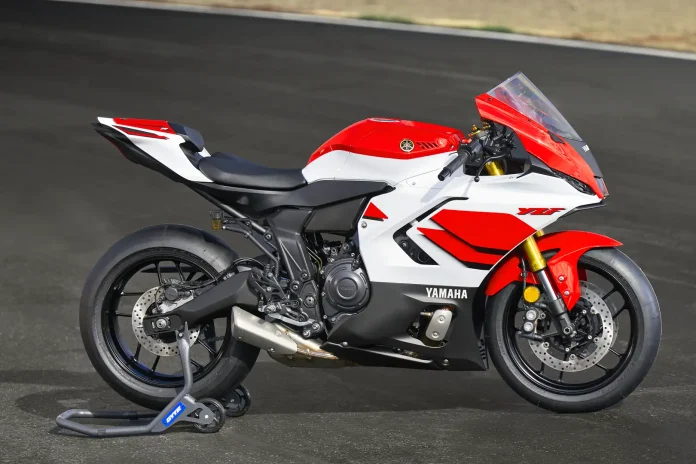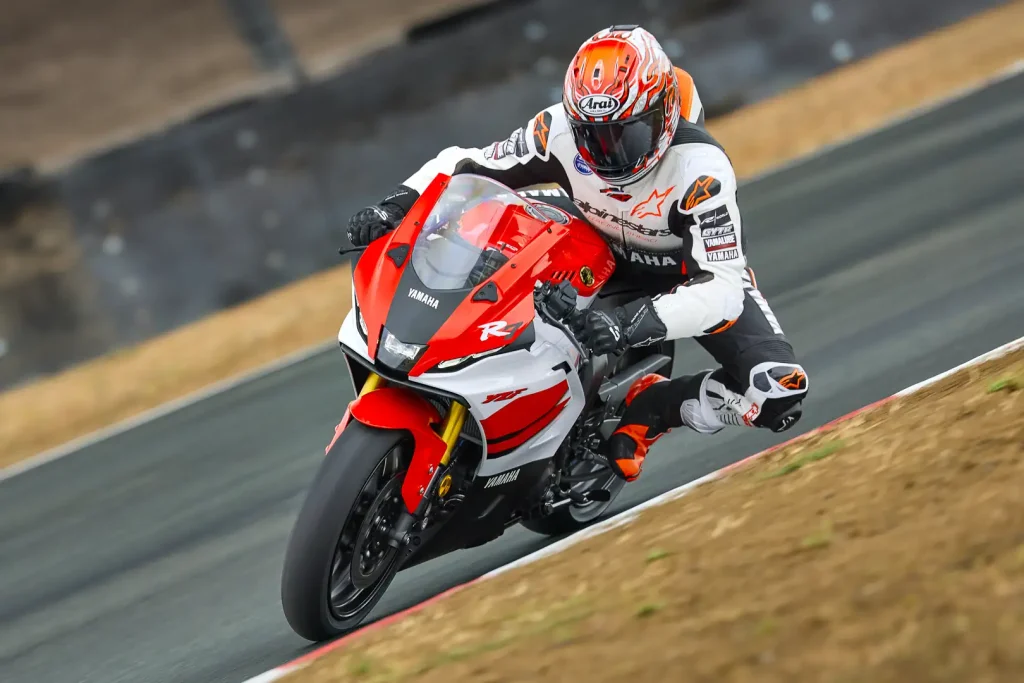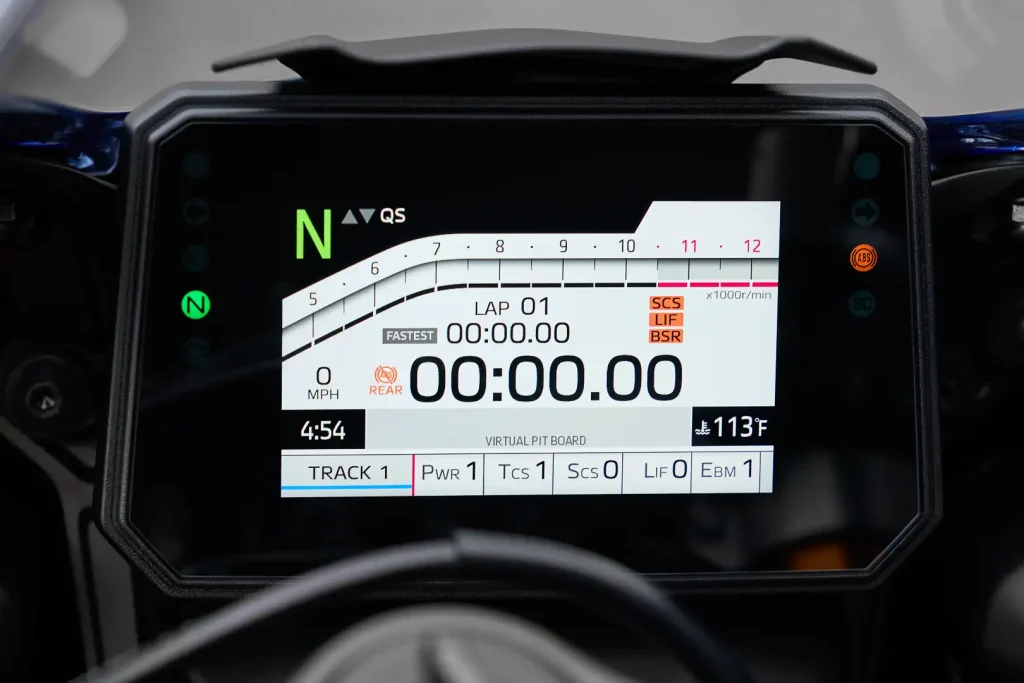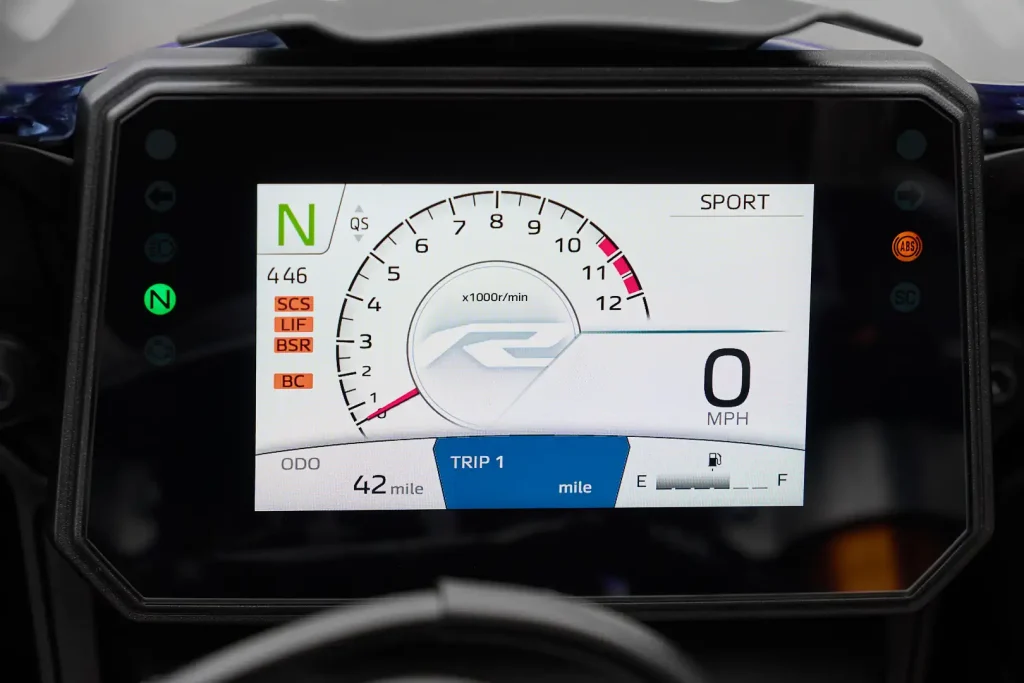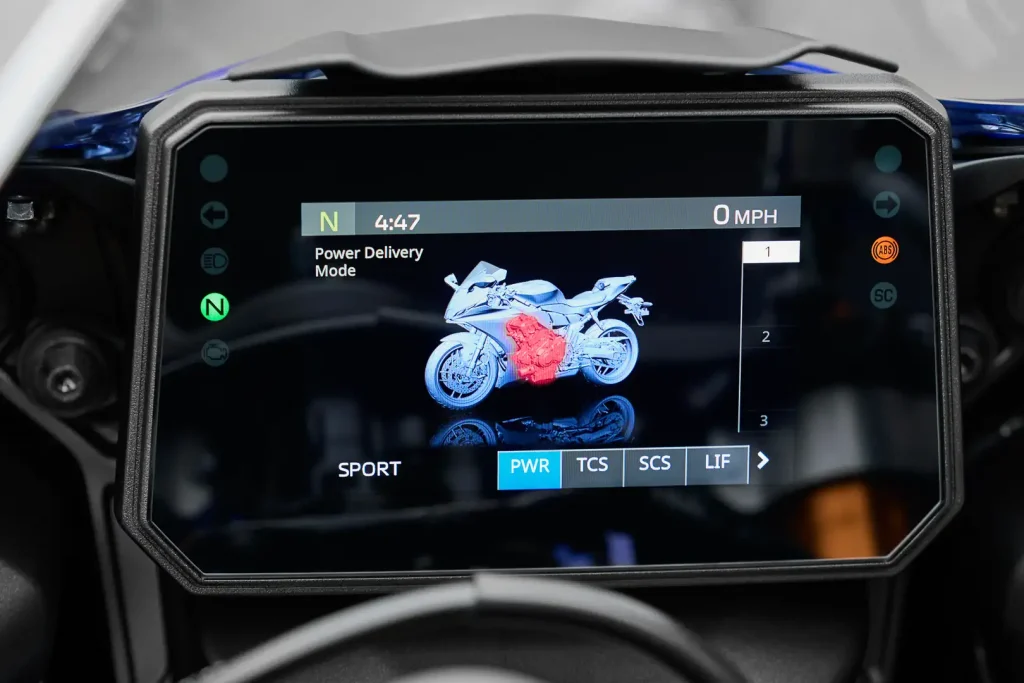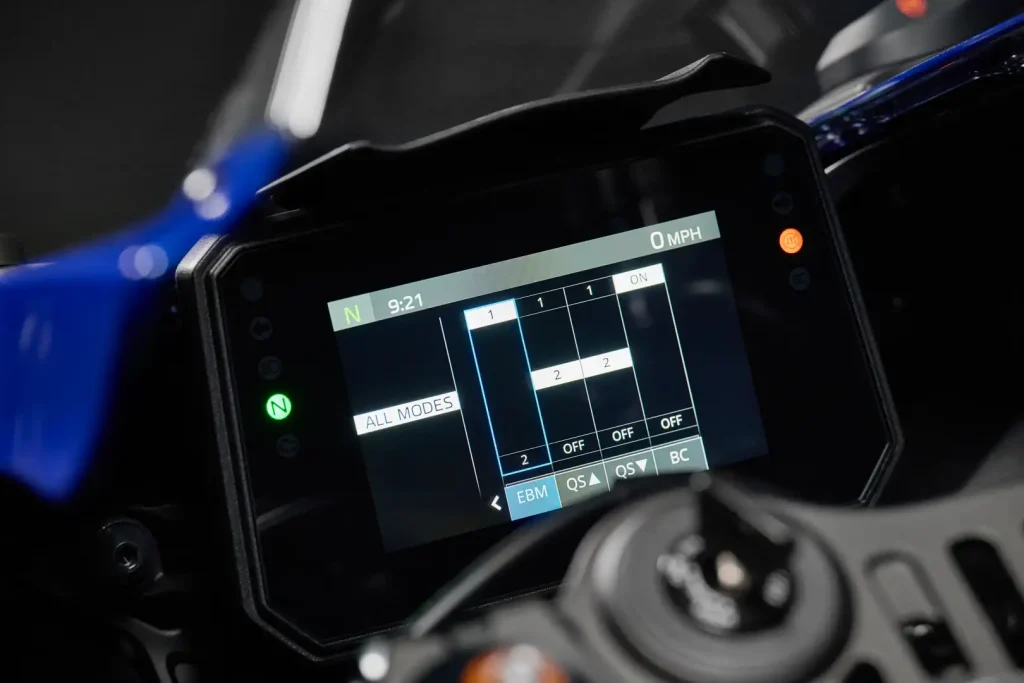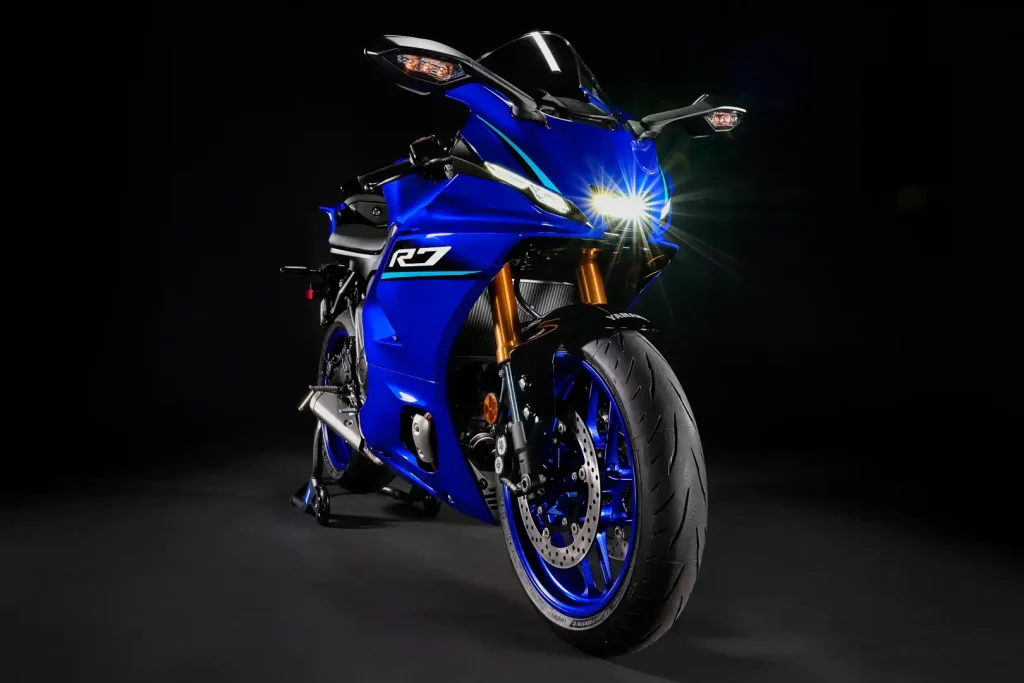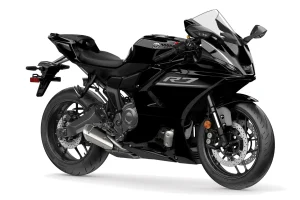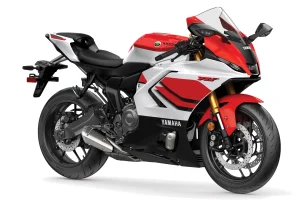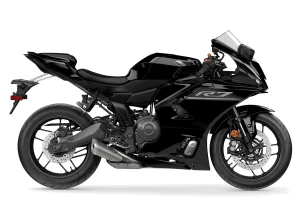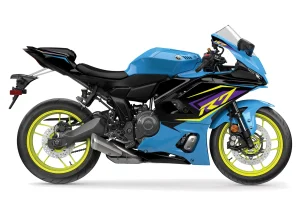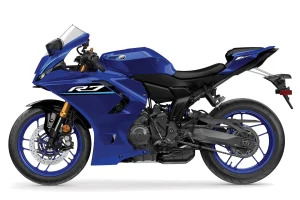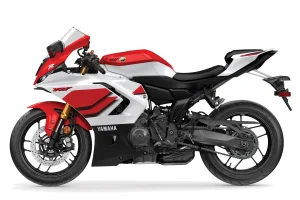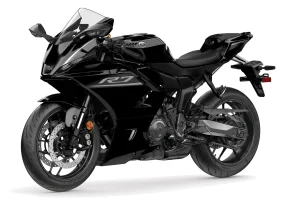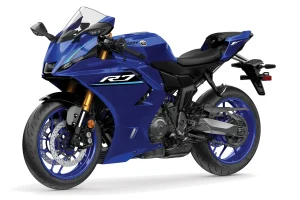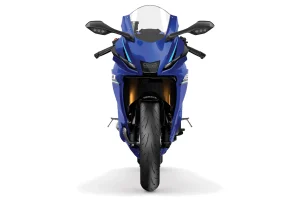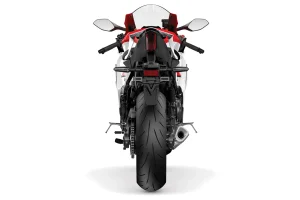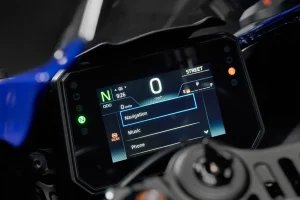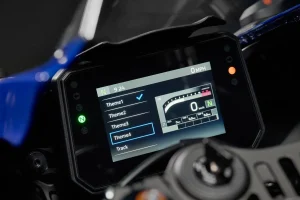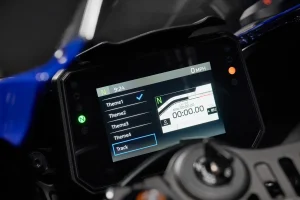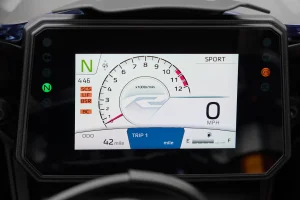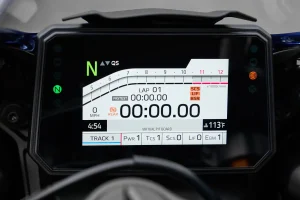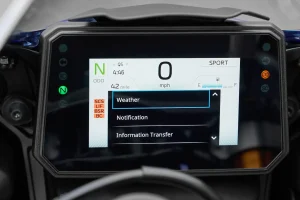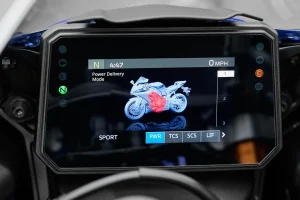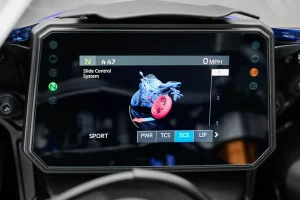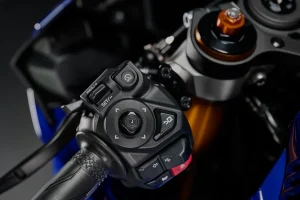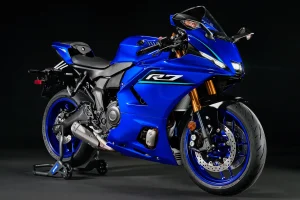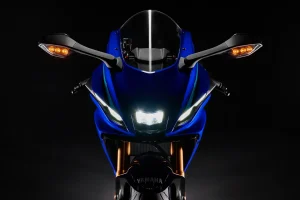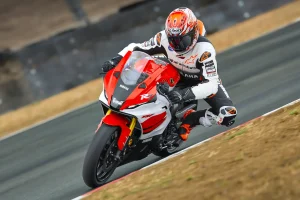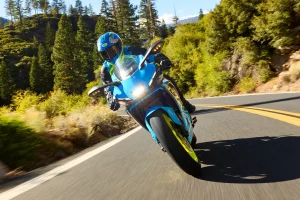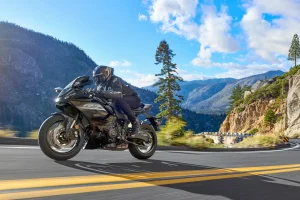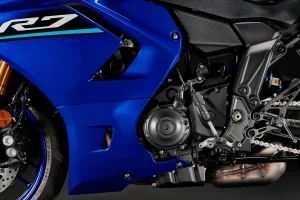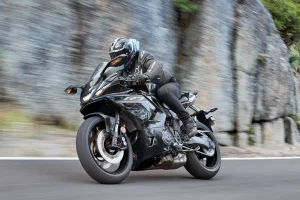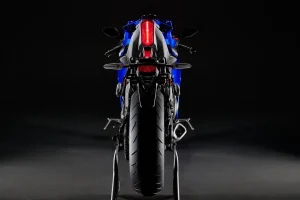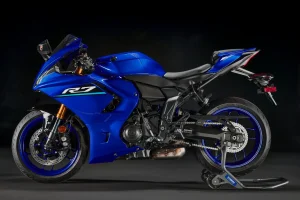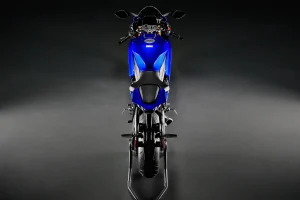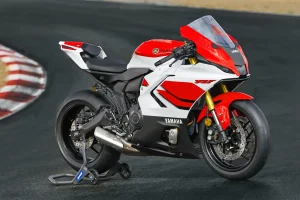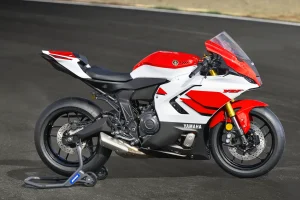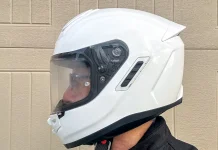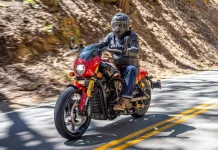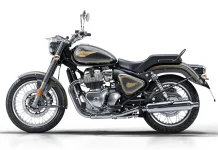Four years after its debut, the R7 gets its first major upgrade. Improvements to the 2026 Yamaha YZF-R7 range from electronic to mechanical and ergonomic to cosmetic. There’s a lot to know about this popular supersport bike, so let’s get started.
- The frame and swingarm are stiffer this year, and that’s just part of the list of chassis changes. The revised tubular steel frame boosts torsional, longitudinal, and lateral rigidity without added weight. A redesign of the asymmetrical swingarm sharpens road feedback, according to a Yamaha insider, and features new linkage. The new triple clamp design is inspired by the M1 MotoGP bike raced by Fabio Quartararo and Alex Rins. Suspension travel has been shortened by about a third of an inch at both ends. Additionally, the new R7 has 0.3 degrees more rake and a slight increase in trail.
- Yamaha’s latest SpinForged 10-spoke aluminum wheels cut unsprung weight and inertia. The goal is to improve suspension response and cornering precision. Bridgestone Battlax Hypersport S23 high-performance tires are now mounted on the R7, an upgrade from last year’s S22s.
- Yamaha has made the 2026 R7’s ergonomics more approachable. The clip-ons are higher and closer to the rider, while the seat height is lowered by 0.2 inches. A reshaped fuel tank is deployed for improved rider mobility fore/aft and carries 1.2 quarts more fuel than last year, which contributes to a three-pound increase in curb weight. The footpegs are also new, as are the black-anodized clutch and brake levers.
- A six-axis IMU informs the ride-by-wire electronic package. Derived from the R1 superbike, the R7’s IMU feeds real-time data to the ECU. Lean-sensitive aids include adjustable traction control (four levels, plus off), slide control (four levels, plus off), wheelie control (four levels, plus off), engine braking control (two levels), launch control, and ABS (front-only available). Cruise control is updated and standard, while the turn signals are self-cancelling.
- A five-inch full-color TFT dash offers four themes, plus a track mode. The Yamaha Y-Connect app pairs with the rider’s smartphone and intercom for calls, texts, and music via Bluetooth. Full Garmin StreetCross turn-by-turn navigation is part of the package.
- There is no shortage of power modes on the 2026 Yamaha R7. To get you started, there are three street modes—Sport, Street, and Rain. Four track modes are also available. If that’s not enough, you can program two custom modes via the dash or the Y-Connect app on your smartphone. You can adjust all the “controls”, and have three power delivery choices. The switchgear is also new to reflect the technological upgrades.
- Yamaha’s Y-TRAC Rev app enables live pit-crew messages on track and post-session data analysis. The app records lap times, displays a virtual pit-board, and exports telemetry to a smartphone or tablet. If you’ve gotten in trouble with the stewards and have to take a long lap, your team can inform you on your dash. A speed limiter will make sure you don’t break any rules in pit lane or on Main Street.
- The fairing of the 2026 R7 has been sharpened up for improved aerodynamics. This includes a compact front fairing, slim side panels, integrated winglets, and LED signals built into the mirrors. A minimalist LED headlight cluster and M-shaped intake duct lock in R’s family identity.
- Yamaha brings its third-generation quickshifter to the R7. The new quickshifter delivers clutchless upshifts and downshifts. All you have to do is go faster than 9 mph, and have the motor running at least 2000 rpm for upshifts and 1600 rpm when downshifting. The operation is tuned for less chassis pitch, and smoother braking on downshifts.
- The new R7 gets the MT-07’s intake duct and asymmetrical funnels. This channels the CP2 engine’s raw induction roar straight to the rider, sharpening the feel of acceleration, both substantively and emotionally. Otherwise, the parallel twin is unchanged.
- All of these changes add just $200 to the price of the R7. Even more amazing, the 2026 Yamaha YZF-R7 is only $400 more than the debut edition in 2022. If you want to spend an additional $300, you can opt for the 70th Anniversary Edition, which does look sharp. Otherwise, you have your choice of Team Yamaha Blue, Raven Black, or Breaker Cyan/Raven. The R7 hits Yamaha showroom floors in February.
2026 Yamaha YZF-R7 Specs
ENGINE
- Type: CP2 parallel-twin w/ 270-degree crankshaft
- Displacement: 689cc
- Bore x stroke: 80.0 x 68.6mm
- Compression ratio: 11.5:1
- Valvetrain: DOHC; 4 vpc
- Transmission: 6-speed w/ quickshifter
- Clutch: Wet multiplate w/ slipper and assist functions
- Final drive: Chain
CHASSIS
- Front suspension; travel: Fully adjustable KYB 41mm fork; 4.7 inches
- Rear suspension; travel: Linkage-assisted, cantilevered, spring-preload and rebound-damping adjustable KYB shock; 4.8 inches
- Front wheel: 17 x 3.50
- Rear wheel: 17 x 5.50
- Tires: Bridgestone Battlax Hypersport S23
- Front tire: 120/70-17
- Rear tire: 180/55-17
- Front brakes: 298mm discs w/ 4-piston calipers w/ Brembo master cylinder
- Rear brake: 245mm disc w/ Nissin caliper
- ABS: Cornering-aware
DIMENSIONS and CAPACITIES
- Wheelbase: 54.9 inches
- Rake: 24.0 degrees
- Trail: 3.6 degrees
- Seat height: 32.7 inches
- Fuel capacity: 3.7 gallons
- Estimated fuel consumption: 59 mpg
- Curb weight: 417 pounds
COLORS
- Team Yamaha Blue
- Raven Black
- Breaker Cyan/Raven
- 70th Anniversary Edition (+$300)
2026 Yamaha YZF-R7 Price: from $9399 MSRP
2026 Yamaha YZF-R7 Photo Gallery


